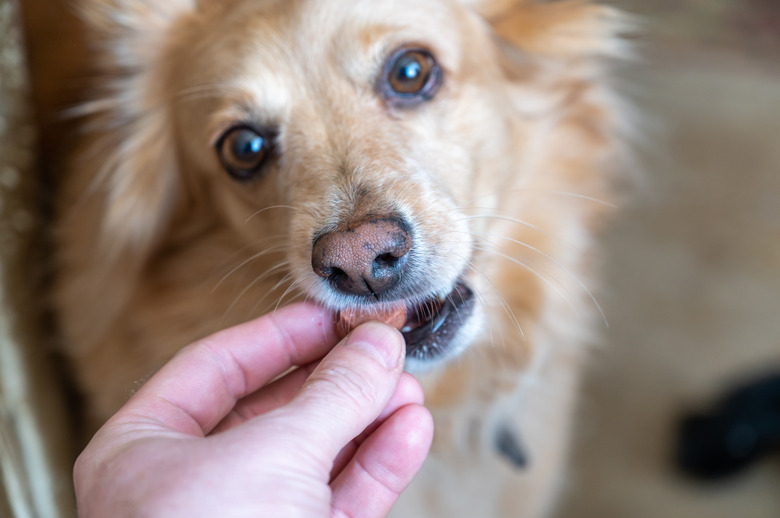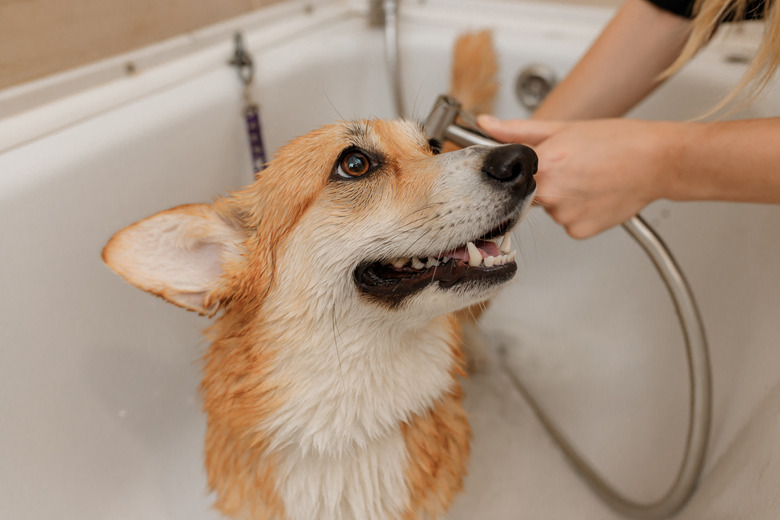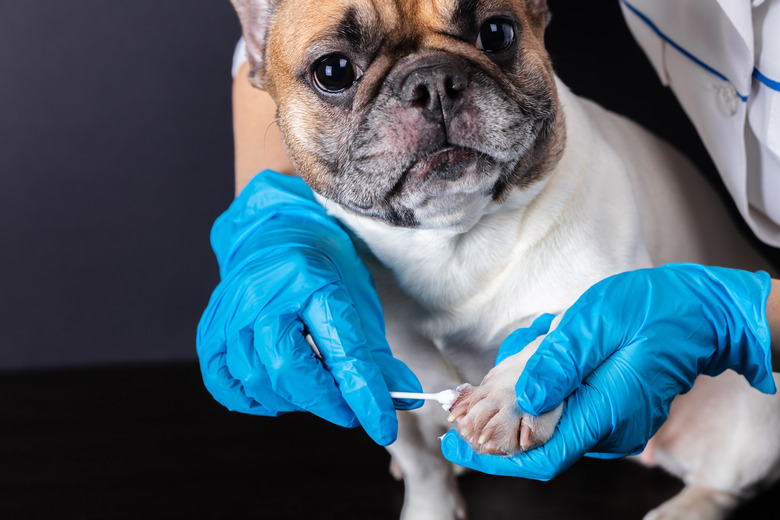What Are The Treatments For Foot Fungus & Yeast In Canine Paws?
Your dog may be itching, licking, and biting their paws. Your pet may also be shaking their head or scratching their ears more than usual. So, what could cause this discomfort? Many times, foot fungus and yeast infections are to blame for this noticeable change in dog health. Your veterinarian can best assess what may be causing these uncomfortable symptoms and the best course of treatment.
What causes a yeast infection in dogs?
What causes a yeast infection in dogs?
Yeast is a type of fungus normally present on a dog's body. However, problems arise when there is an overgrowth or abundance of yeast, which can lead to itchiness and irritation, making your dog uncomfortable. Dogs typically get yeast infections on their feet, paws, and ears. The fungus Malassezia pachydermatis is to blame. This yeast is naturally occurring on dogs' skin, but an overgrowth can cause unpleasant symptoms. However, yeast infections are not contagious.
Symptoms of yeast infections in dogs
Symptoms of yeast infections in dogs
The most common symptoms of yeast dermatitis are itching, redness, musty odor, flaky skin, thickened skin, and pigment changes that make your dog's skin look darker in certain areas. Your dog may be excessively licking their skin or have hair loss around the infected area. If your dog has an ear infection, they may shake their head frequently and scratch at their ears often.
Another common place where a yeast overgrowth may develop is on a dog's paws between a dog's toes and footpads. Some breeds of dogs who have many skin folds on their face, such as bulldogs, can develop yeast infections in these skin folds. If your dog is exhibiting these symptoms, a yeast infection could be the culprit.
Why yeast infections develop in dogs
Why yeast infections develop in dogs
If your dog gets a yeast infection, you may be wondering why and what is causing it to develop in the first place. Yeast infections are often related to allergies, either environmental allergies or food sensitivities. These allergies can cause the skin to become itchy, inflamed, and abnormal. This in turn creates an abnormal environment on the dog's skin.
Yeast that would otherwise be harmless may grow exponentially because of the altered skin environment, which can lead to infections as well as additional inflammation and discomfort. A bacterial infection may also be present where the yeast infection is located, causing double trouble and discomfort for your dog.
If your dog has a yeast infection and there is an underlying condition causing it, such as allergies, your veterinarian needs to diagnose it so your dog can feel better long term. Your dog may experience frequent or recurring yeast infections, so your veterinarian needs to identify and treat the root cause while also treating the yeast infection.
Oral treatments may be needed to treat your dog
Oral treatments may be needed to treat your dog
Your veterinarian may decide to prescribe an oral anti-fungal medication for more severe cases of yeast infections and dermatitis. Oral anti-fungal medications include fluconazole, ketoconazole, and itraconazole. Dogs with yeast dermatitis often simultaneously have a bacterial skin infection.
Dogs with bacterial infections and yeast infections will need to take antibiotics and anti-fungals and may need to take them for several weeks to clear up the infection. These medications can have negative side effects if taken long term, so monitoring your pet and following up with your veterinarian is necessary. While treatment is started to address these infections, you will also need to discuss a plan with your veterinarian to diagnose the underlying condition that is causing your dog to get yeast infections.
Diagnosing a canine yeast infection
Diagnosing a canine yeast infection
To diagnose this issue, your veterinarian will check for yeast organisms. Your veterinarian will perform either an impression smear or a tape impression. An impression smear involves pressing a slide directly onto the dog's skin and then inspecting the slide under a microscope. Your veterinarian may also scrape bits of skin with a blade and place it onto a slide if needed.
A tape impression involves pressing a piece of tape onto the dog's skin, transferring it to a slide, and inspecting it under a microscope. Both methods can detect the distinctive Malassezia organisms on your dog's skin. Your veterinarian may perform other diagnostics to rule out other types of fungal infections and bacterial infections and to diagnose the underlying reason for your dog's yeast infection.
Home remedies to treat dog yeast infections
Home remedies to treat dog yeast infections
Don't attempt home remedies for any sort of infection. Your dog will need to see a veterinarian for a treatment plan and prescription medication. A medicated shampoo may be prescribed by your veterinarian. If your dog has skin conditions like oily or greasy skin, you may need to use a shampoo with benzoyl peroxide or selenium sulfide. Your veterinarian may also suggest that your dog will need an anti-fungal shampoo containing chlorhexidine, ketoconazole, or miconazole as a next step.
Anti-fungal shampoos take time to work properly and must remain on the skin for at least 10 minutes to be effective. The shampoo may need to be repeated every three to five days for two to 12 weeks depending on the severity of the condition.
Prescription topical ointments for dogs
Prescription topical ointments for dogs
Your dog may be able to use a topical ointment as a spot treatment on the affected area if the infection is not systemic. If the infection is only in a few areas of the skin or just in their ears, then applying a daily ointment may be your best bet. This treatment can provide immediate relief to your itchy dog. Your veterinarian may also suggest prescription wipes and sprays. Prescription wipes can be used to address yeast infections between a dog's toes.
The bottom line
The bottom line
If you notice your pooch showing signs of a yeast infection or foot fungus, such as itchy skin and skin irritation, consult your veterinarian. Your veterinarian will address the yeast infection itself to give your dog some relief. Your DVM will then look for the underlying cause of the yeast infection, such as environmental allergies or food sensitivities, to keep your dog feeling better long term. Your veterinarian can best determine the next steps so your dog has some sweet and welcome relief.


